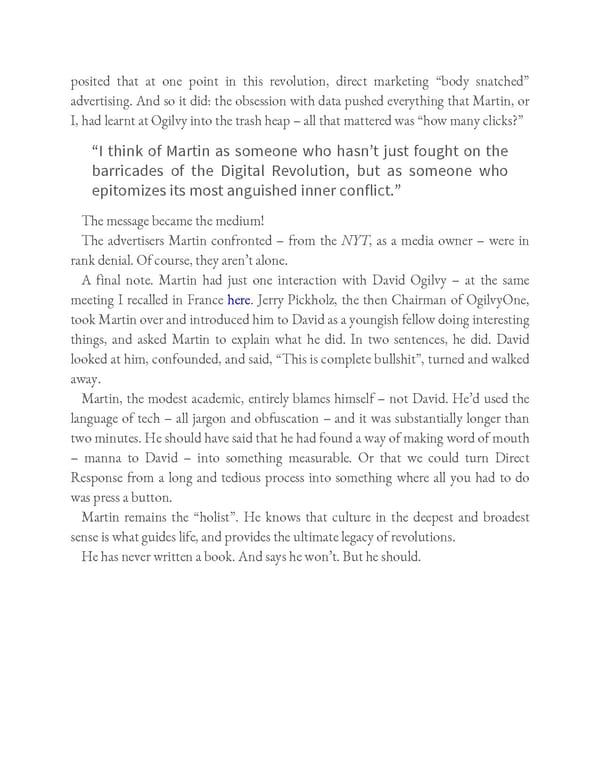posited that at one point in this revolution, direct marketing “body snatched” advertising. And so it did: the obsession with data pushed everything that Martin, or I, had learnt at Ogilvy into the trash heap – all that mattered was “how many clicks?” “I think of Martin as someone who hasn’t just fought on the barricades of the Digital Revolution, but as someone who epitomizes its most anguished inner conflict.” The message became the medium! The advertisers Martin confronted – from the NYT, as a media owner – were in rank denial. Of course, they aren’t alone. A final note. Martin had just one interaction with David Ogilvy – at the same meeting I recalled in France here. Jerry Pickholz, the then Chairman of OgilvyOne, took Martin over and introduced him to David as a youngish fellow doing interesting things, and asked Martin to explain what he did. In two sentences, he did. David looked at him, confounded, and said, “This is complete bullshit”, turned and walked away. Martin, the modest academic, entirely blames himself – not David. He’d used the language of tech – all jargon and obfuscation – and it was substantially longer than two minutes. He should have said that he had found a way of making word of mouth – manna to David – into something measurable. Or that we could turn Direct Response from a long and tedious process into something where all you had to do was press a button. Martin remains the “holist”. He knows that culture in the deepest and broadest sense is what guides life, and provides the ultimate legacy of revolutions. He has never written a book. And says he won’t. But he should.
 Ogilvy on Advertising in the Digital Age Page 377 Page 379
Ogilvy on Advertising in the Digital Age Page 377 Page 379